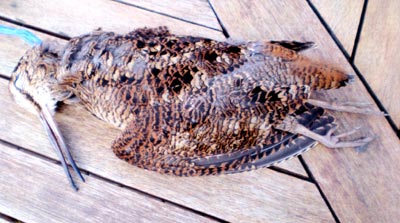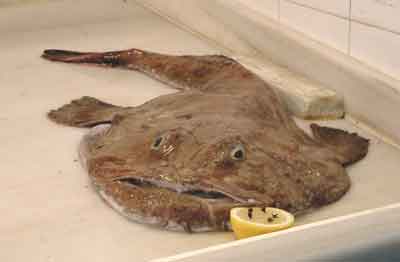
Woodcock. It is a very fine, pigeon-sized, game bird which inhabits boggy woodland and which is usually cooked undrawn, with only the gizzard removed. The trail, or entrails, are considered a great delicacy. A woodcock constitutes one portion. They are often served stuffed with their own gizzards or with the gizzards mashed for the sauce.
Fishwort. A green leafy plant with a slightly fishy smell used in China, Japan, Korea and South East Asia. The roots may also be used and the plant is also used for medicinal purposes.

Monkfish (US: angler fish). A fish with a sweet flavour and succulent firm flesh but with the ugliest appearance imaginable. It is found in the Mediterranean and Atlantic, in coastal waters of north western Europe. It can be recognised by its large head and fan-shaped fins. The fins and the operculum are spiny. It can be eaten fried or in soup. The larger fish often have better flavour. It has a hideous head, which is why it is usually displayed without it, and a muddy colour. It is known as the anglerfish as it bears on its head a 'rod' and 'lure' which attract its prey. The meat of the tail is sweet and succulent - almost like lobster meat, entirely compensating for is appearance. The flavour may well be assisted by its own diet which is high in shellfish. The best monkfish are Lophius piscatorius and the similar Lophius budegassa, the favourite of the Spanish. American monkfish or goosefish (Lophius americanus) is considered inferior, while New Zealand monkfish (Kathetostoma giganteum) is related to the stargazer and is only fit for soup.